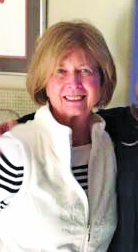Ruth Fletcher-Carter recalls early days at Berthoud Bulletin
Ruth Fletcher-Carter of Berthoud could have purchased the former Berthoud Bulletin, but the family offer was made when she was in her 20s.
If she was in her 30s, she might have considered it. But by then, the paper was gone.
“It was a lot of hard work,” said Fletcher-Carter, founder and executive director of Berthoud Rural Alternatives for Transportation (RAFT), who also worked in the education field for the deaf and hard of hearing for 44 years. “The part of actually publishing the paper was very, very physical.”
The Berthoud Bulletin, which folded in 1968, was a precursor to the Berthoud Weekly Surveyor. Becky Justice Hemmann, publisher, and her son, Robb Justice, started the Surveyor in 2004, publishing their first edition that year on June 16. Robb has since left and Justice Hemmann’s husband, Rudy Hemmann, joined in early 2006 as a reporter and now is the project manager.
Originally, Justice Hemmann and Justice wanted to use the name “Berthoud Bulletin,” but the Longmont Times Call had the copyright, so they conducted a search and found “Surveyor” and added “Weekly” to avoid the two initials of B and S being used together. At that time, the Berthoud Recorder was a competitor and was printed from 1987 to 2008.
By the 2000s, newspapers were well into the digital age and could be printed off site, but when Fletcher-Carter worked at the Bulletin, everything was done in-house, alongside a print shop that printed announcements and invitations and the like. The combined newspaper and print shop were located at 349 Mountain Ave., now the location of the Sirenhouse Salon + Barber.
“It was a family newspaper, and it was printed every Thursday,” Fletcher-Carter said about the Berthoud Bulletin, which was published the same day as the Surveyor now is.
Fletcher-Carter was the first subscriber of the Surveyor, she believes, as confirmed by Justice Hemmann, she said.
“I think I bought the first subscription to the Surveyor for my father,” Fletcher-Carter said.
Originally, Fletcher-Carter’s parents, Rolland Fletcher, Sr., and Vera Fletcher, purchased the Berthoud Bulletin in 1951 from Lucinda Gosney and kept the same name. At that time, the Fletchers used hot type, or hot metal typesetting. The type had to be cleaned with kerosene to remove the ink for each print run, and then it was taken to the smelting room and melted into bars and poured into trays to hold the hot lead. The lead was needed for linotype, a printing technique that prints an entire line instead of individual characters.
“We would type the print, and it came out backwards and upside down, so when it printed, it was right side up, going left to right,” Fletcher-Carter said.
Before linotype, everything was set in block letters, said Rolland Fletcher, Jr., who learned to operate the linotype machine, while he and his dad set the type.
“It’s a piece of machinery, so it has to be done exactly right, or it doesn’t work,” said Fletcher, Jr., Fletcher-Carter’s twin brother. “If you don’t have the lines set correctly—they had spacers that you would put in it, so it would make it tight, so when the lead came in it would form lead type—if it’s off, you would have squirt. Hot metal set into typeset would squirt all over machine, and you’d have to clean it up.”
When the Fletchers purchased the Berthoud Recorder from Gosney, she stayed on as linotype operator in charge of setting the print. At the time of the purchase, Fletcher-Carter and Fletcher, Jr., were in elementary school, while their older sister was in college. Fletcher-Carter worked at the paper during her elementary and junior high years from 1956 to 1961 and during home visits from college.
Fletcher-Carter worked in the front office with her mother, typing up articles and securing advertisements. When asked about her title, she said, “It was called kid. It was a family-run business. There were no titles.”
At that time, typewriters were used, and town residents would call in some of their stories, which Fletcher-Carter typed into article form—the stories included social news like anniversaries and birthday parties that became news in a town with 1,000 population. Fletcher, Sr., attended town meetings, Chamber of Commerce events and club meetings and typed up what occurred into news articles.
“Mom was more of a social editor. She got the articles of what was going on in town,” Fletcher-Carter said.
Fletcher, Sr., used a press camera to take pictures. He used copper plates, reversing the images and rolling ink onto the plates so they came out the correct way in black and white. He and the rest of the family put the paper to bed Wednesday nights, meaning they did the final touches to get it printed and out to readers. Any time from midnight to dawn, Vera got the kids out of bed to help print, fold and label the freshly printed papers that then were delivered to the post office.
“It was a dirty job, nothing like today’s cold type,” Fletcher-Carter said.
The teachers at the Fletchers’ schools let Fletcher-Carter and her brother sleep at their desks, since they were exhausted from being up all night, she said.
One night during printing, Fletcher-Carter had on a loose sweater and all of a sudden was pulled into the press, the material catching on the wheels. Her dad quickly turned off the press and installed an automatic shut-off device to prevent future accidents.
Fletcher, Jr., physically put the pages of the newspaper together and alongside Fletcher-Carter served as a proofreader. She learned how to write articles from her father, who would make corrections and tell her why he was making them.
After printing, the Fletchers cleaned the type to ready it for smelting, working on it Friday and Saturday.
“My brother and I always went to school with ink under our fingernails. I hated it,” Fletcher-Carter said.
Printing in the early years was different from today in many aspects, Fletcher-Carter said.
“You couldn’t just correct one letter that was wrong, you’d have to type and reinsert the whole line,” Fletcher-Carter said.
When the Fletchers sold the paper, printing was converted to offset cold type, Fletcher-Carter said.
“Now it’s all done on computers, and it’s sent off. … Now multiple newspapers can use the same publishing place,” Fletcher-Carter said, adding that when she was involved, “It took a family to put it out, because there was a lot of labor involved.”
The Fletchers took the newspaper home, too, at least mentally, talking about what was going on in the community at the dinner table.
“Involvement in the community to me is one of the most exciting parts of the news,” Fletcher-Carter said.
Fletcher-Carter and Fletcher, Jr., were like a lot of other children who worked alongside their parents starting at a young age.
“Every kid by age 13 pretty much in a little town like that had a job,” Fletcher, Jr., said. “Most of the kids we grew up with lived on the farms. They were doing things at their family farm. In town, every kid probably worked for somebody.”
- February, 01 2019

Farmstead project perceived code viol...
By Rudy Hemmann The Surveyor On Monday, Jan. 28, 2019, Town Administrator Chris Kirk and...
- June, 24 2021
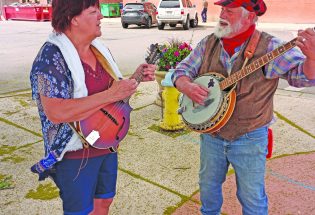
The Franks turn street corner into Tr...
Couresy photo - Steve and Erica Frank of the Town Troubadours...
- April, 10 2020

From tragedy to triumph
By Clay Peck, Lead Pastor, Grace Place The Surveyor So much has changed in our...
- March, 03 2016

More than a job; it’s who he is
Ivy Stockwell fi fth grade teacher Jason Hooker, center, is surrounded...
- April, 29 2022
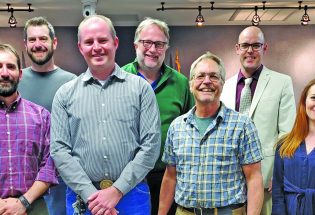
New town board takes office
At Tuesday night’s regular meeting of the Berthoud Board of Trustees, the board welcomed in...
- March, 27 2020
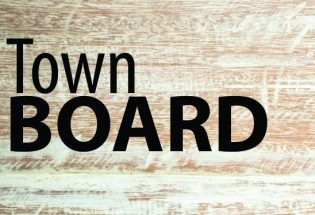
Town board holds virtual meeting
By Rudy Hemmann The Surveyor The Berthoud Board of Trustees convened their very first “virtual”...

POLICEBLOTTER
Community News
Northern Water sets C-BT quota at 70% for 2024
Community News

Emotions run high during Revere Property hearing
Community News
Snowpack at 119% above normal
Community News

Karspeck to serve third term as Berthoud mayor
Community News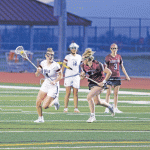

OPINION – No bitchin’ allowed
Community News
Roy Tripi to become principal of BHS on July 1
Community News
COMMUNITY CALENDAR:
Community Calendar – add an event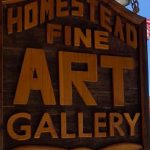
Homestead Fine Art Gallery First Fridays OPEN HOUSE
03 May 4:00 PM - 7:00 PM
Homestead Fine Art Gallery First Fridays OPEN HOUSE
07 Jun 4:00 PM - 7:00 PM
Homestead Fine Art Gallery First Fridays OPEN HOUSE
05 Jul 4:00 PM - 7:00 PM
Homestead Fine Art Gallery First Fridays OPEN HOUSE
02 Aug 4:00 PM - 7:00 PM
Homestead Fine Art Gallery First Fridays OPEN HOUSE
06 Sep 4:00 PM - 7:00 PM
Homestead Fine Art Gallery First Fridays OPEN HOUSE
04 Oct 4:00 PM - 7:00 PM

